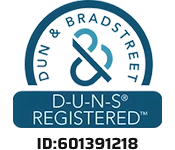In 2019, First Mold Company, a leader in injection molding and mold manufacturing, took on a challenging project from a renowned writing board manufacturer. The task was to produce miniature buttons for the writing board, which required not only precision but also attention to aesthetic details. The project involved two types of buttons: one measuring 1.5cm x 0.2cm x 0.3cm and the other 0.5cm x 0.2cm x 0.3cm. These small parts, crafted from ABS material, were crucial to the functionality and appearance of the final product.
Innovative Mold Design for Small Button Production
The design and fabrication of the molds were critical to the success of this project. Given the small size of the components, our engineering team focused on creating high-precision molds with intricate details. We disigned the molds with a unique 2×4 layout, allowing for the simultaneous production of multiple parts in a single injection cycle. This innovative design not only increased efficiency but also ensured uniformity across all produced pieces.

To further enhance the mold design, we incorporated advanced cooling systems to maintain a consistent temperature during the injection process. This feature was crucial in preventing warping or other defects, which are common challenges in small button production. The result was a set of molds capable of producing high-quality buttons with minimal variation, ensuring that each piece met the stringent requirements set by the client.
The Writing Board Assembly Process
After the successful production of the buttons, the next phase involved integrating these components into the writing board assembly. Our team worked closely with the client’s design and assembly teams to ensure a seamless integration process. The buttons, despite their small size, played a significant role in the functionality of the writing board, serving as essential control elements. We provided detailed specifications and recommendations for the assembly process, ensuring that the buttons were installed correctly and functioned smoothly.
Our commitment to quality extended beyond production. We conducted thorough testing to verify the durability and performance of the buttons under various conditions, including repeated use and exposure to different environmental factors. This rigorous testing guaranteed that the final product would meet the highest standards of quality and reliability.
Electroplating: Adding the Finishing Touch
One of the standout features of these buttons was the electroplating finish. The electroplating process not only enhanced the appearance of the buttons but also provided additional protection against wear and tear. Our state-of-the-art electroplating facilities allowed us to achieve a smooth, even coating that met the client’s aesthetic and durability requirements.
We offered a range of electroplating options, including nickel, chrome, and gold plating. For this project, the client opted for a nickel finish, which provided a sleek, modern look while offering excellent resistance to corrosion. The electroplating process was meticulously controlled, ensuring a consistent and high-quality finish across all 900,000 pieces.
You may like reading “Portable ECG Monitor Buttons Production“














